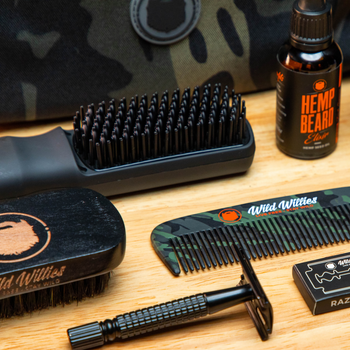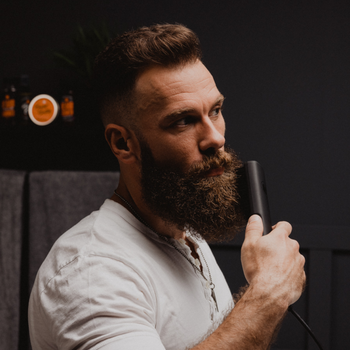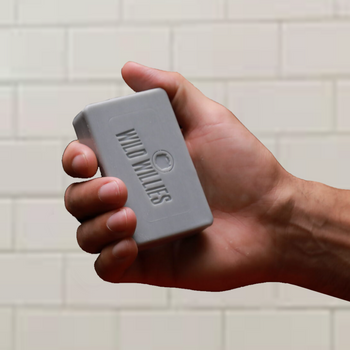Growing a manly beard doesn’t mean you have to put up with that itchy, dry skin, “I want to scratch my face off” feeling.
Beard Itch can be frustrating, especially since no one seems to have a definitive answer for why this happens.
In this article, we'll take a look at the top five reasons why your beard might itch—and, more importantly, how to fix it!
Table of Contents
- Why does my beard itch when it grows?
- Why does my beard itch during the growth process?
- How long is the itchy phase of growing a beard?
- How do you get through the itchy phase of growing a beard?
- How can a derma roller help with an itchy beard?
- What are the top 5 remedies for an itchy beard?
- What is the fastest way to get through the itchy beard stage?
Why does my beard itch when it grows?
Here are the five most common reasons your beard itches when it grows:
- Dry Skin
- Beard Products
- Washing Consistency
- Skin Inflammation
- Medical Condition
How can I soothe dry skin?
One of the most common causes of beard itch is dry skin. When your skin is dry, it becomes irritated and itchy. Dry skin is prevalent in cold, dry weather.
If you're experiencing an itchy beard, make sure to moisturize your skin regularly. You can use a quality moisturizer, body lotion, or even hemp beard oil.
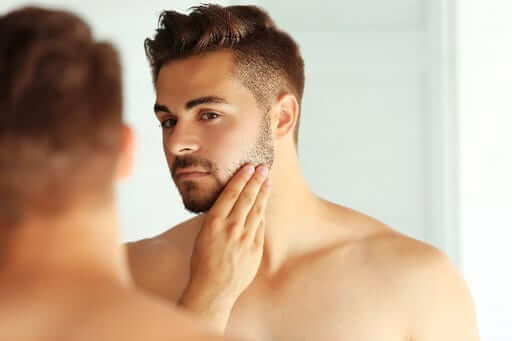
What beard products should I use to relieve the dreaded beard itch?
When washing your beard, make sure you wash it with beard wash and conditioner.
Using shampoo and body wash can dry out your beard, which causes itchiness.
If your beard is still itchy, use beard oil or balm to moisturize your beard and skin.
How often should I wash my beard to relieve beard itch?
If you are experiencing itchiness start by washing your beard once a day. If you notice your skin drying out, cut back to once every other day or use beard oil as a moisturizer.
Beard itch can be caused by dry, dirty, or greasy skin. If you're not washing your beard enough, it will get dirty and greasy, but washing too often can dry out your skin.
The Best Beard Shampoo: The Top 12 Beard Washes
Does skin inflammation cause beard itch?
Another common cause of beard itch is inflammation. When your skin is inflamed, it becomes red and irritated, leading to an itchy sensation.
Beard oil can be used to moisturize your skin and reduce inflammation.
If you still experience inflammation after using beard oil you may have an underlying health condition.
What medical conditions cause beard itching?
This information is not intended to be a substitute for professional medical advice, diagnosis, or treatment.
Most men have some itchiness while their beard hair grows. However, if you have tried everything, and nothing is helping, you should discuss it with your doctor.
The most common medical conditions that cause sensitive skin are:
- Xerosis
- Folliculitis
- Dermatitis
- Tinea

What is beard xerosis?
Xerosis (xero-sis) is the medical term for abnormally dry skin. It can occur in any part of the body but is commonly seen on the hands, feet, and face.
Dry skin is caused by various factors, including cold weather, wind, dehydration, sunburn, soap or detergent allergies, and certain medications.
Symptoms of dry skin include scaling, itching, and cracking. Treatment for dry skin depends on the underlying cause.
If environmental factors are to blame, measures can be taken to adjust one's environment (e.g., using a humidifier in winter).
If allergies are to blame, avoidance of allergens is critical.
What is beard folliculitis?
Folliculitis (folli-cu-li-tis) is a condition that results in inflammation of the hair follicles. It can occur on the face, neck, scalp, and chest.
Folliculitis is a skin infection caused by an allergic reaction or an autoimmune disorder.
Symptoms of folliculitis include redness, swelling, itching, and pain around the hair follicles.
Treatment for folliculitis depends on the underlying cause. If a skin infection is to blame, antibiotics can help. If allergies are to blame, use antihistamines.
What is beard dermatitis?
Dermatitis (der-ma-ti-tis) is a condition that results in inflammation of the skin. There are several different types of dermatitis, each with its own set of symptoms. The most common types of dermatitis are atopic dermatitis, contact dermatitis, and seborrheic dermatitis.
Atopic dermatitis is a chronic condition that results in itchy, dry skin.
Contact dermatitis is a skin allergy that occurs when the skin comes into contact with an irritant or allergen.
Seborrheic dermatitis is eczema that causes red, scaly patches on the face and scalp.
Treatment for dermatitis depends on the underlying cause. If a skin allergy is to blame, avoidance of allergens is critical. If a skin infection is to blame, antibiotics will be prescribed.
Dietary changes and other behavioral modifications may also help alleviate symptoms of dermatitis.
What is beard tinea?
Tinea (ti-nea) refers to fungal infections that affect the hair, nails, and skin. Common types of tinea include athlete's foot, jock itch, ringworm, nail fungus (onychomycosis), and beard rash (tinea barbae).
These infections are caused by fungi called dermatophytes that live on the dead tissues in our body (skin tissue and hair).
Why does my beard itch during the growth process?
You don’t need to worry about the itching that comes when you first start to grow out your facial hair. It’s normal to experience a certain level of itching when growing a beard.
Growing Beards can feel uncomfortable initially, especially if you’re not used to it. The itchiness should not last too long, so try to ride it out or use one of the remedies below.
How long is the itchy phase of growing a beard?
The itchy phase usually subsides after four to six weeks of beard growth.
It’s easy to think that the hair on your face is just like other hair on your body. But it’s not. Why? Because facial hair is more sensitive than any different kind of hair on your body.
That’s because it’s coarser and thicker than the hair on other parts of your body, so it takes longer to grow.
Facial hair also grows in different ways than other hair types on your body. Try using some of the remedies mentioned in this article, and give it a good 3-4 weeks so you can get used to your new facial hair before deciding if it's for you or not.

How do you get through the itchy phase of growing a beard?
Your beard will not always feel itchy and dry. It's just a temporary side-effect of the hair growth process, but you can find ways to make it more manageable!
Your beard is going to become less itchy over time.
While you're waiting around for your facial hair growth to stop being so darn irritating, why not try some beard oil or beard butter?
You can also try washing your beard with shampoo for men with beards. And if all else fails, go ahead and trim your beard’s split ends a little to see if that gives you some relief.
At the end of those few weeks, it might start to feel like the itch will never go away. But then something magical happens. Your skin gets used to the beard. You begin to enjoy your beard's new look and feel, and you even start to get compliments!
How can a derma roller help with an itchy beard?
Derma rolling can help treat an itchy beard by promoting beard growth. The derma roller is a handheld device with tiny needles on its surface.
When rolled across the skin, the needles create tiny punctures in the skin. The little holes trigger the body to produce new skin cells and collagen.
The new skin cells and collagen help heal any inflammation or irritation that may be causing the itching. The derma roller can also help thicken the hair shaft, making your beard less itchy.
If you are experiencing an itchy beard, try using a derma roller once a week. Be sure to use gentle pressure and avoid rolling over open wounds, ingrown hair, or scars.
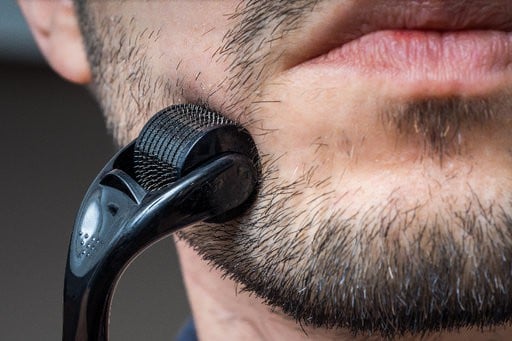
What are the top 5 remedies for an itchy beard?
- Beard Balm or Oil
- Beard Wash
- Stop Scratching
- Antihistamine
- Medical Treatment
1. Apply beard oil or balm.
Beard oil and balm can help soothe the skin and reduce itching. They also help keep the beard moisturized, preventing dryness, flaking, and ingrown hairs.
2. Wash your beard with a beard shampoo.
Shampooing your beard with a special beard shampoo can help remove any built-up dirt, oils, or dead skin cells that may be irritating.
3. Try using a wet cloth to itch the area.
If the area is incredibly itchy, you can try using a wet cloth to apply direct pressure and relieve itchiness.
4. Take an antihistamine.
If you think allergies may be causing your beard to itch, then taking an antihistamine might help solve the issue.
5. Consult your doctor.
If you have tried all of these remedies and nothing is helping in reducing beard itch, then you might want to seek medical attention in case you have an underlying issue.
Your doctor might even recommend laser hair removal for a chronic condition, especially if you keep getting infections or inflammation.
What is the fastest way to get through the itchy beard stage?
As we discussed today, there are many different reasons why a beard might itch and how-to solutions for each of them. The most important takeaway is that the more time it takes to grow, the more likely it will be to itch!
Beards shouldn't cause frustration or embarrassment; they should make people smile when they see them on someone else!
Here is our beard growth kit to help your beard grow faster through the itchy stage. Faster growth equals a shorter growth stage.
Beard Growth Kit
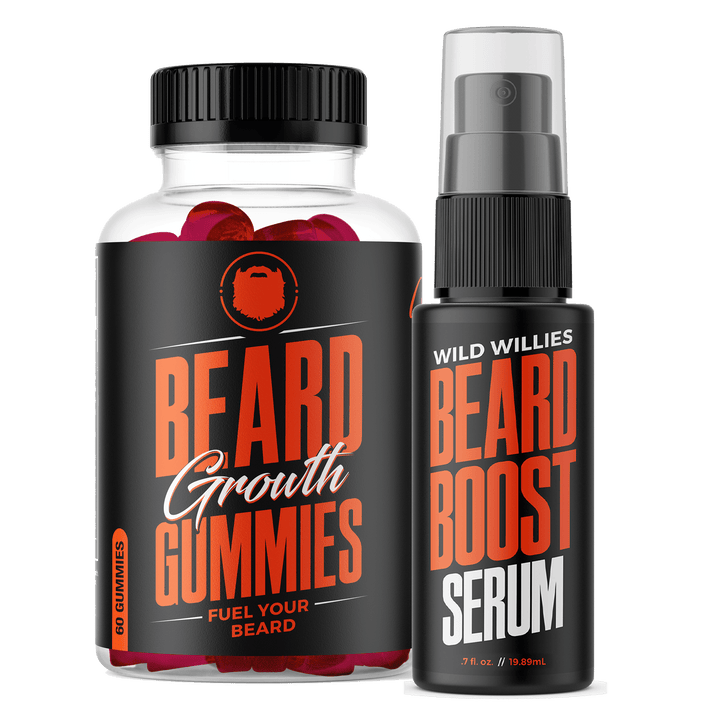
$29.95
$35.00
Give your beard its best growth potential! Tackle beard growth from all angles. The best-selling Beard Boost Serum builds and grows the beard by waking up sleeping hair follicles when applied to the skin. Where the growth capsules tackle growth… Read More
